Your life is going along all swimmingly and then, suddenly, it’s gone! Not your life! Your chainsaw, your tractor, your car!
Your car isn’t so bad, since you’ve got documentation to spare. But did you happen to write down the serial number of your chainsaw or your tractor? Probably not.
Photographic proof is strong evidence to hand over to insurance adjusters and the police. The good news is it isn’t hard to get. Just about everyone has a camera in one form or another. Or you could hire me! I’ll charge you a lot, but you’ll get decent shots. You don’t have to hire a pro. You just need patience and a little skill.
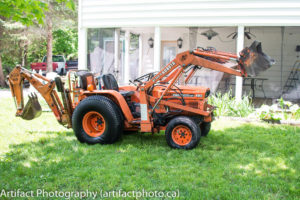
The trick is, be systematic. You need an overall shot, to show what the item you’re recording is. It helps to wash the thing you are recording so that what it is is easily identifiable. Background should be simple so anyone can tell what is and what isn’t part of the object. This example could have been clearer, but at least it isn’t in front of a big orange wall.

Then you need to get closer and get the model number(s) and serial number(s) for each component. These aren’t always immediately easy to find, so you might have to check the owner’s manual (If you don’t have one, you can probably find one online). Look under the “specifications” or “servicing the machine” sections of the manual and it will often tell you where to find these numbers.
Then you have to get in nice and close and get decent shots of the numbers. They aren’t always easy to get at, so you may run into depth of field issues, dirt, or just plain ugly casting. Take your time and shoot from a variety of angles if necessary. If possible, wait for an overcast day, since the serial numbers often show up better with diffuse lighting.
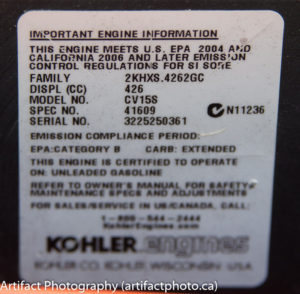
This lawn tractor engine plate was difficult to get straight on, so the important information was focused on: Model # and Serial #. Although slightly blurry, it is still evident that the manufa cturer is Kohler.
One machine can have multiple serial number and model numbers. In the case of this Kubota 8300HST tractor, there’s a separate model number and serial number for the front end loader attachment,

and a different manufacturer of the backhoe attachment.
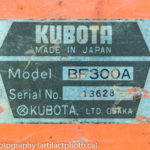
The tractor itself has a separate serial number from the motor.
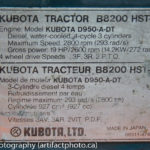
The tractor’s builder identification plate is more obvious than the serial number, which is on the other side of the transmission. I had to check the manual to find it.

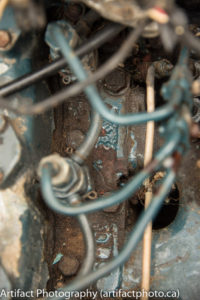
The engine serial number is cast into the top of the engine. It required a bit of cleaning to see it, and then I found it was written upside down to the side of the engine I was on. Originally, I had thought the number started with 680, only to discover that when figuring out the other part of the number, the whole thing was backward.
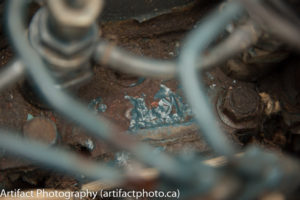
So, another advantage of a photographic record is that if you read the number wrong, someone else can always come by and correct you.
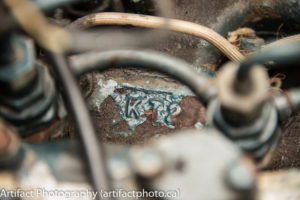
Basically, if this tractor gets found in some chop shop and the police compare the image to the engine, as long as it looks the same, it’s mine. So if you find an engine with the serial number KT2 D89 and it isn’t at my house, call the cops.
So once you’ve got the photographs, you can either save them in a folder called “Insurance Photos” or something, with each object in a separate named folder within “Insurance Photos”, or you can print them into an PDF document. A copy of the folder or the PDF can be sent in advance to your insurance agent, or just keep a few copies in a few places. I keep mine on three hard drives and a USB key which I carry with me, plus I keep a folder in a cloud service. But I’m paranoid.
This blog is published every Monday at 9:00 am, Eastern Standard Time. If you have comments, questions, or can think of a better approach, feel free to leave a comment. I’ll try to get back to you with a pithy answer.
Feel free to explore the rest of the Artifact Photography (a division of 1350286 Ontario Inc.) website at www.artifactphoto.ca